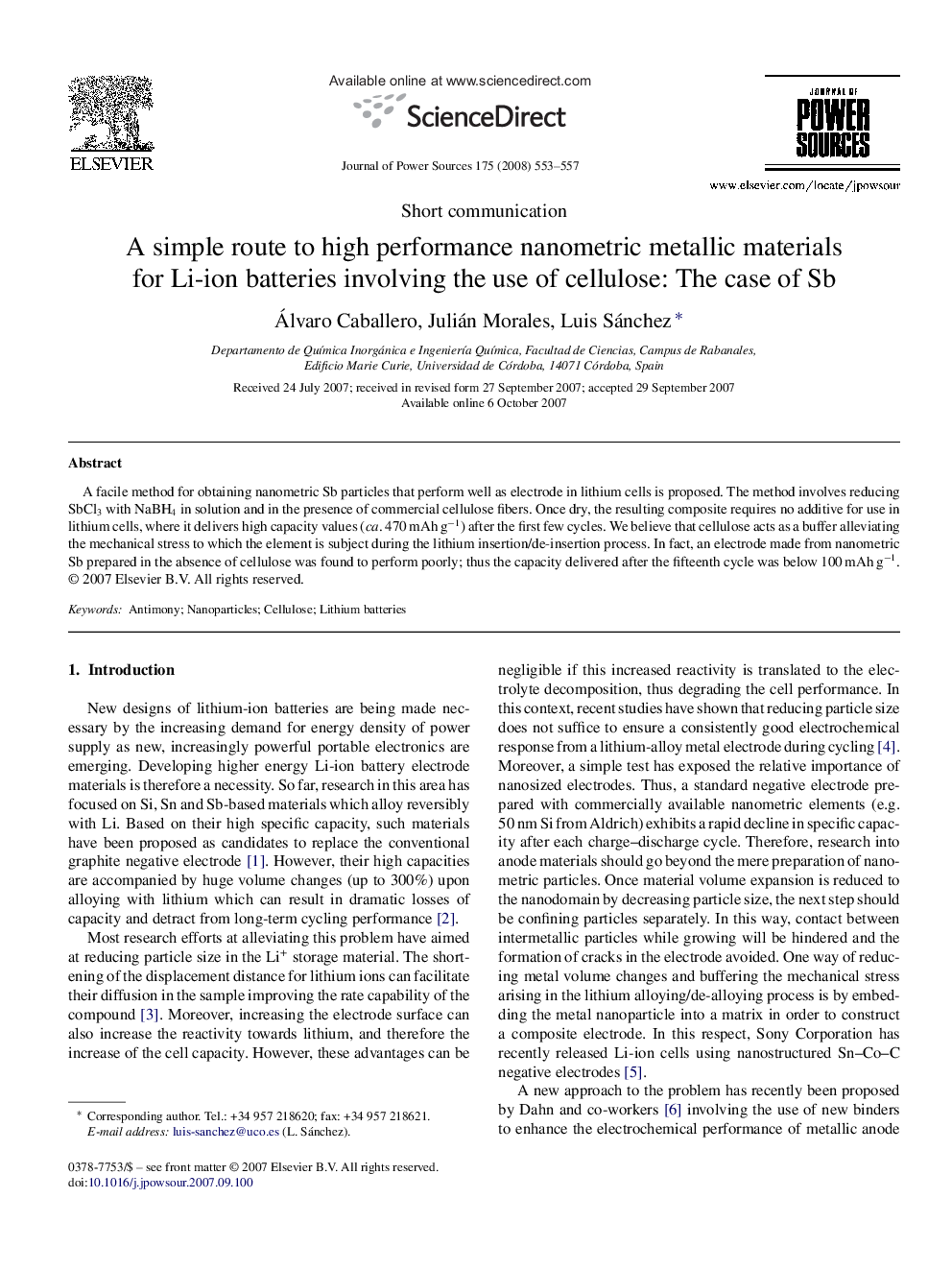| Article ID | Journal | Published Year | Pages | File Type |
|---|---|---|---|---|
| 1294816 | Journal of Power Sources | 2008 | 5 Pages |
Abstract
A facile method for obtaining nanometric Sb particles that perform well as electrode in lithium cells is proposed. The method involves reducing SbCl3 with NaBH4 in solution and in the presence of commercial cellulose fibers. Once dry, the resulting composite requires no additive for use in lithium cells, where it delivers high capacity values (ca. 470 mAh g−1) after the first few cycles. We believe that cellulose acts as a buffer alleviating the mechanical stress to which the element is subject during the lithium insertion/de-insertion process. In fact, an electrode made from nanometric Sb prepared in the absence of cellulose was found to perform poorly; thus the capacity delivered after the fifteenth cycle was below 100 mAh g−1.
Related Topics
Physical Sciences and Engineering
Chemistry
Electrochemistry
Authors
Álvaro Caballero, Julián Morales, Luis Sánchez,
